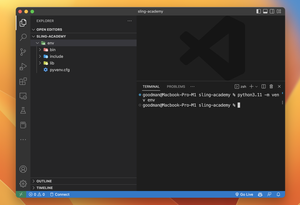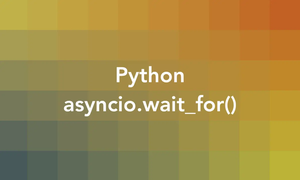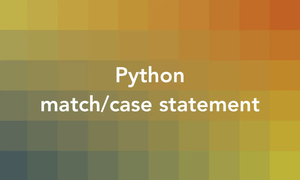Introduction
When using the asyncio library in Python along with aiohttp, it’s common to encounter the RuntimeError stating ‘There is no current event loop in thread’. This error is a result of attempting to get the default event loop when none is set for the current thread. In Python’s asyncio ecosystem, event loops are the core of the asynchronous operations, but they need to be managed properly to work across different threads and during various phases of an application’s lifecycle. This guide offers multiple solutions to resolve this error.
Contextualize and Instantiate Event Loop
Manually creating and setting an event loop can prevent the ‘No current event loop’ error by ensuring that the thread in which asyncio’s operations are called always has a loop to refer to.
Steps to get through te bug:
- Import the necessary asyncio module.
- Create a new event loop.
- Set the new event loop as the current loop for the current thread.
- Perform your async operations.
- Close the loop once your operations are done.
A small example:
import asyncio
async def main():
# Your asynchronous code here
pass
def run():
loop = asyncio.new_event_loop()
asyncio.set_event_loop(loop)
loop.run_until_complete(main())
loop.close()
run()Advantages: Gives full control over the event loop’s lifecycle.
Limitations:
- Increases the complexity of your code.
- Needs to be managed very carefully to avoid resource leaks.
Using asyncio.run()
Python 3.7 introduced the asyncio.run() function, which simplifies running async routines by managing the event loop. It creates a new event loop and closes it after the async tasks are complete.
Below are what we’re going to do:
- Ensure you are running Python 3.7 or higher.
- Define your async function.
- Use asyncio.run() to run your function.
Example:
import asyncio
async def main():
# Your asynchronous code here
pass
asyncio.run(main())Advantages:
- Less boilerplate code.
- Automatic handling of event loop initialization and closure.
Limitations:
- Only works in Python 3.7 and above.
- Cannot be called when another asyncio event loop is running.
Set Event Loop Policy
In some scenarios, you might encounter this error due to an event loop policy that isn’t suitable for your environment, especially on Windows where the default event loop policy might cause problems. Setting it to WindowsSelectorEventLoopPolicy can fix the no current event loop error.
Steps to implement the fix:
- Import asyncio and, if on Windows, the WindowsSelectorEventLoopPolicy from asyncio.
- Set the new event loop policy for the current process.
Complete Code Example:
import asyncio
import sys
if sys.platform == 'win32':
from asyncio import WindowsSelectorEventLoopPolicy
asyncio.set_event_loop_policy(WindowsSelectorEventLoopPolicy())
# You can now use asyncio's event loop related functions.
Advantages:
- Can be set system-wide once.
- Can eliminate compatibility issues on Windows.
Limitations:
- Affects the entire process.
- Primarily relevant to Windows systems.











